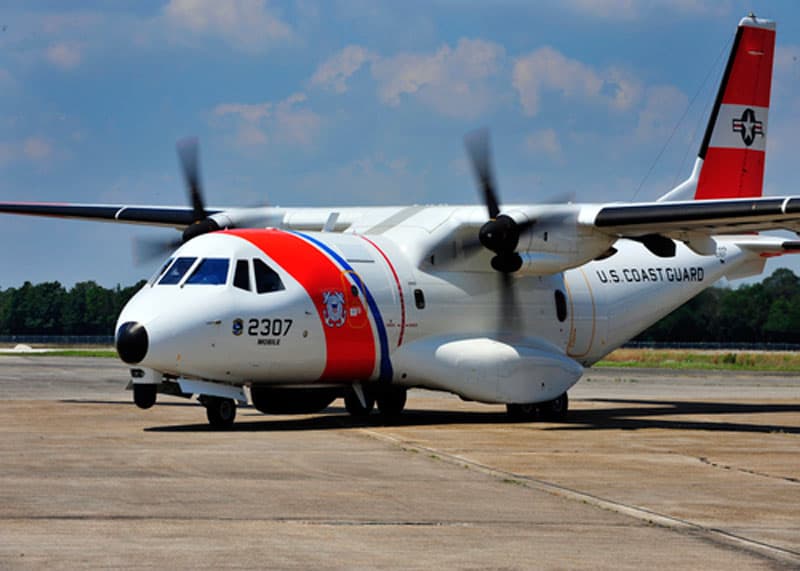
The Coast Guard selected the HC-144A “Ocean Sentry” to serve as its new medium range multi-purpose surveillance aircraft. In early 2007 the first three were delivered to the Coast Guard Aviation Repair & Supply Center (AR&SC) at Elizabeth City, North Carolina to undergo installation and testing of mission sensor and communication equipment. Initial technical publications were used to develop standardized Coast Guard maintenance procedures and technical manuals. From AR&SC the aircraft were flown to Coast Guard Aviation Training Center in Mobile, Alabama for an operational test and evaluation phase. On May 8, 2007 an order for five additional HC-144A s was placed followed by three in 2010. Future orders are anticipated.
The HC-144A is the first major aviation asset to be procured under the Integrated Deepwater System program. The criterion was the acquisition of a capable airframe and to place within it a state-of-the-art embedded command, control, surveillance and reconnaissance system within the larger context of Coast Guard surface, air and information technology mission interoperability.
Integrated Coast Guard Systems awarded the contract to European Aeronautic Defense and Space (EADS) for an original procurement order for a derivative of the Casa CN-235-300M aircraft. Designated HC-144A in the Coast Guard aviation inventory, this aircraft is the replacement for the 21 HU-25 Falcon jets which were retired due to aging and obsolescence issues. The initial procurement plan was for 36 HC -144A aircraft. This was reduced to 18 with the acquisition of the C-27J.
The aircraft can be utilized for search and rescue, illegal drug and immigrant interdiction, marine environmental protection, military readiness operations as well as for cargo and personnel transport. It can operate on short, semi prepared runways with soft surfaces.
In its Maritime Patrol Aircraft configuration, the HC-144A has a radius of action of 910 nautical miles and can remain aloft for nearly nine hours. The aircraft is powered by two General Electric CT7-9CE turboprop engines, similar to those used in the Coast Guard HH-60 helicopter. The initial problem of salt water corrosion on the engine blades has been corrected. The Ocean Sentry operates at speeds up to 236 knots. Its crew consists of two pilots and three enlisted technicians. Aircraft avionics permanently installed on the aircraft include Rockwell-Collins glass cockpit displays, APS-143C multi-mode radar optimized for small target detection, and forward looking infrared/electro-optical sensors.
The HC-144a’s large cargo cabin and rear ramp enables the aircraft to be mission tailored on short notice. A standardized roll-on/roll-off palletized mission system was developed which facilitates access to a number of on-board systems and a wide variety of sensor capabilities. They include:
- Voice and data communications from surface vessels, law enforcement agencies, and shore facilities via UHF,VHF, HF, and commercial satellite systems
- Networked Command and Control (C2) system that provides Common Tactical Picture (CTP) and Common Operating Picture (COP) resources
- Automatic Vessel Identification Equipment (AIS)
- Surface search radar
- Electro-optical/infrared surveillance and search system
- Electronic surveillance measures equipment
In 2012 a Life Cycle Cost Estimate for the HC-144A was obtained to support the updated APB and Full Rate Production decision. The coast per flight hour (CPFH) based on actual costs incurred was $3,275.
| Manufacturer | Eads-Casa | Max Cruise | 236 kts |
| Designation | HC-144A | Max T.O. Weight | 36,390 lbs |
| Type | Marine Patrol | Max Payload | 13,230 lbs |
| Length | 70’ 2” | Range | 2,305 nm |
| Wing Span | 84’ 8” | Fuel | 1,378 gal |
| Crew | 5 | Engines (2) | GE CT7-9C3 1,870 SHP |

